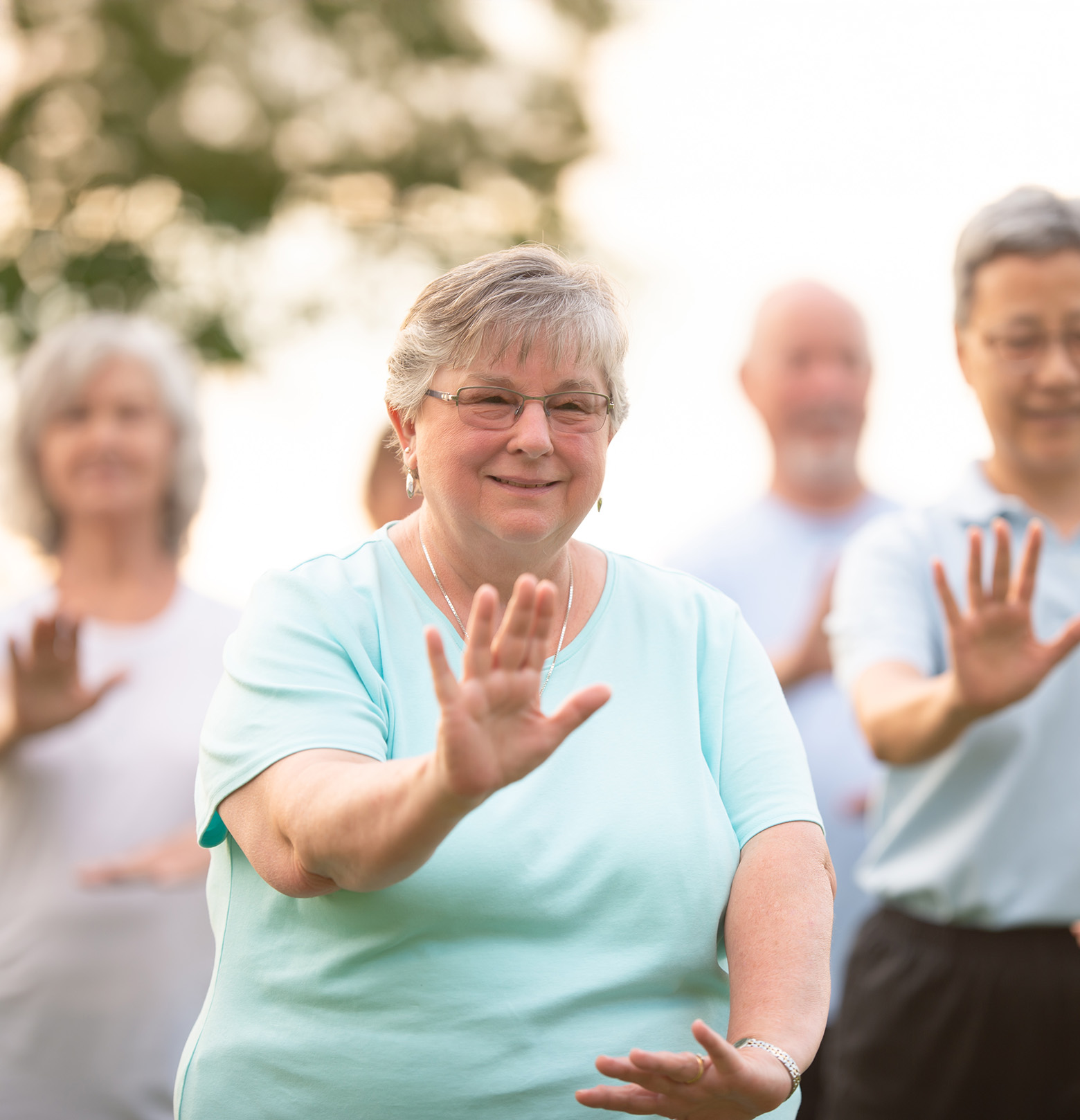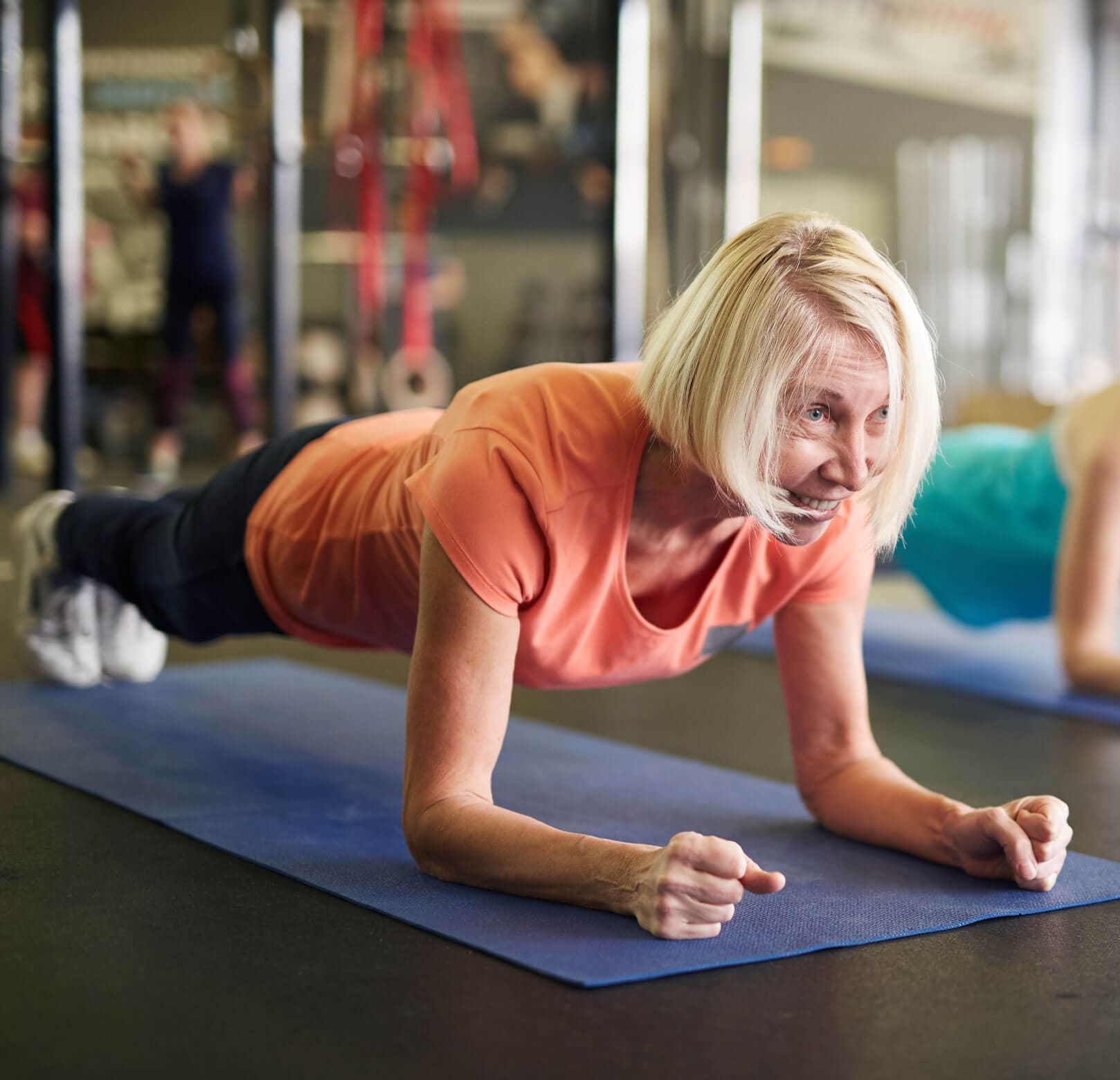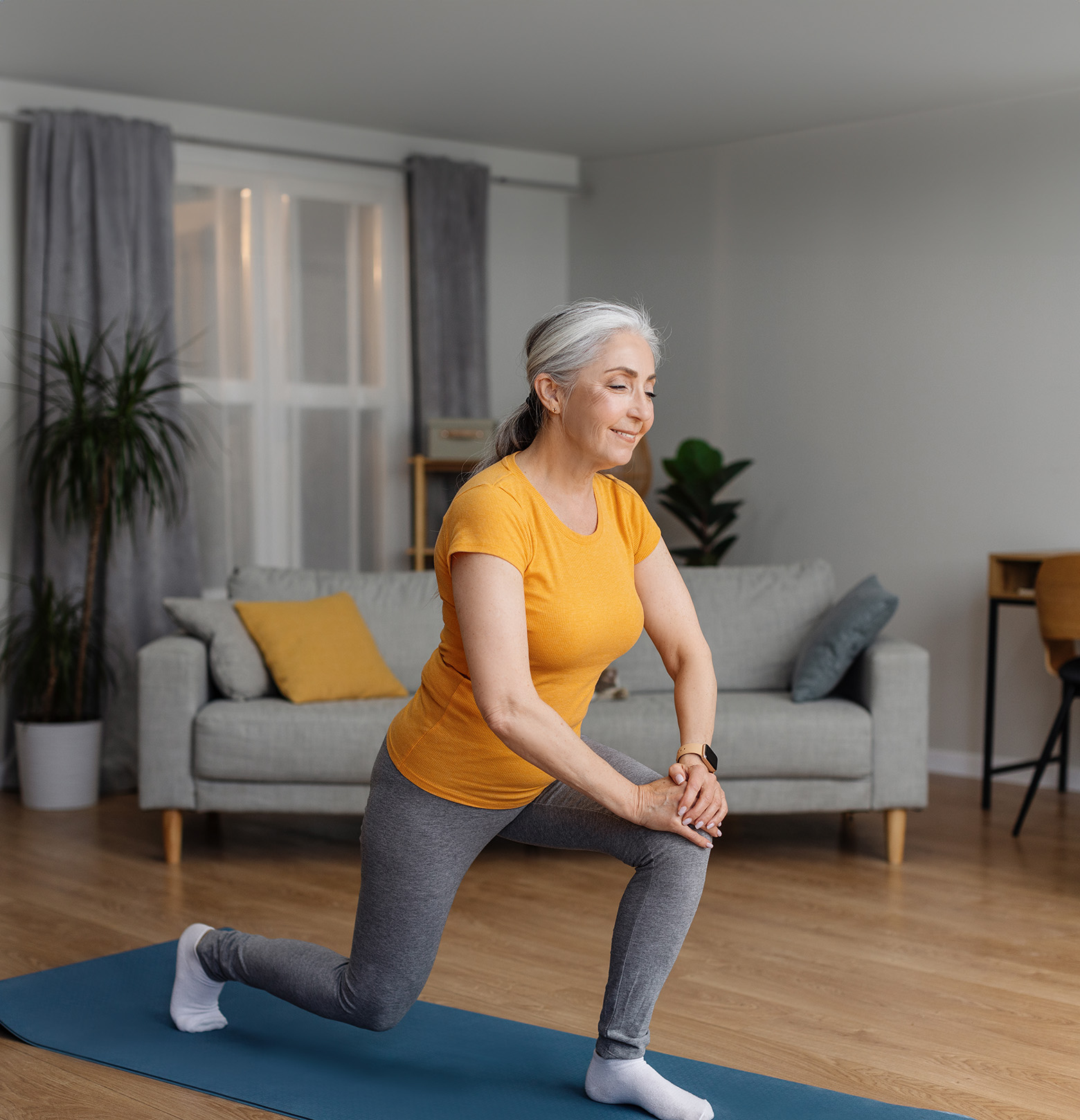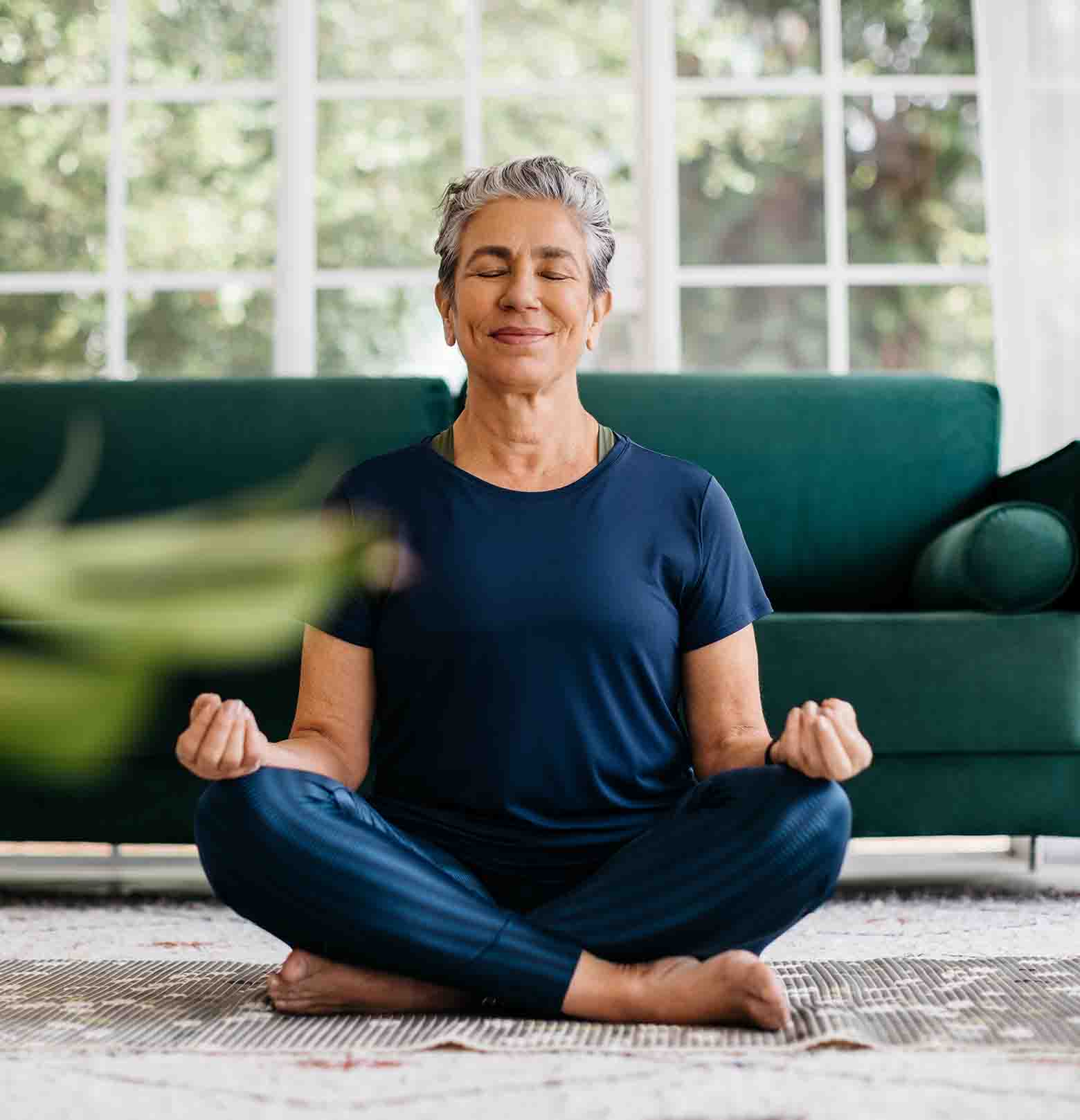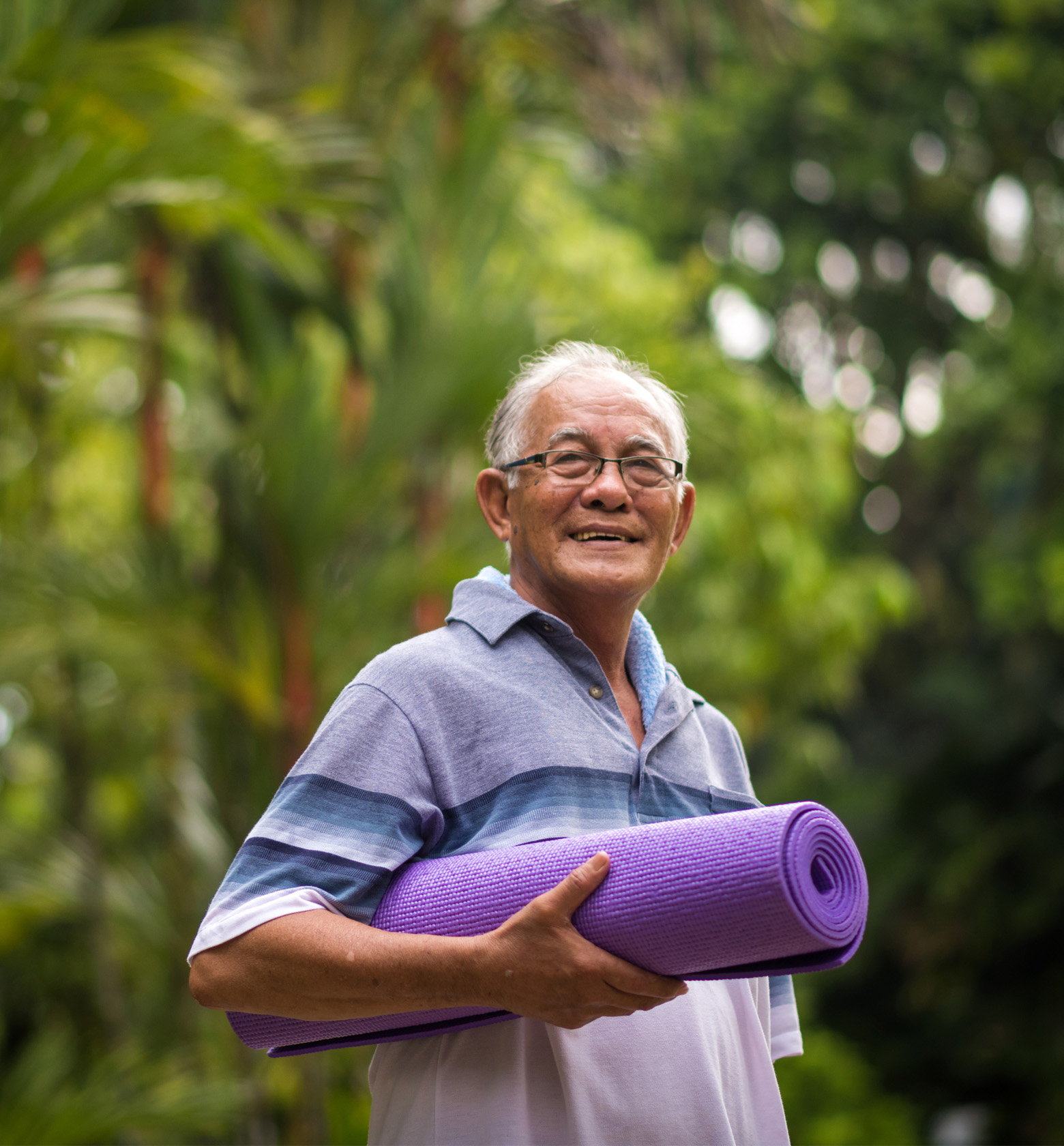With its slow, flowing movements and deep breathing techniques, Tai Chi is a fantastic way to reduce stress and improve overall well-being. Whether you’re looking to stay active or find a moment of calm in your day, Tai Chi offers a low-impact, holistic approach to health. Why not give it a go and experience the benefits for yourself?
Category: Exercise Tip
BEST EXERCISES FOR OVER 50S
Keeping fit and active no matter what age you are is important for our health. As we get older, our fitness levels naturally decline so it becomes even more important to keep exercise an integral part of our everyday life.
Here’s a quick guide and exercise program for over 50s to help you get started with fitness and ultimately improve your health from Personal Trainer and Coach Dan Quirion.
11 EFFECTIVE YOGA POSES FOR WOMEN OVER 60
Yoga is becoming increasingly popular among the elderly, particularly among women over 60. The numerous advantages that this traditional type of exercise offers are irresistible. In fact, there are certain yoga poses for women over 60 that are highly beneficial for this age group. Yoga can be intimidating, especially if it is your first time doing it and you are utterly out of shape. The good news is that you have decided to incorporate yoga into your routine in order to strengthen yourself holistically!
Here are some really tempting reasons as to why any woman above 60 should include yoga in her life:
1. Move and Move, But With Zero Strain
Walking alone is not sufficient when it comes to aging healthily. You need some kind of strength training, which ensures that your mobility remains tactile. According to doctors, the best way to age healthily and strongly is to adopt yoga. Your body will take it easily and you will enjoy it for sure. Yoga strengthens your body by gently coaxing it to indulge in some mild turns and twists. Since you are not using any external weights, the chances of injuries are negligible.
2. You Will Enjoy Better Flexibility
As you age, you become stiffer and less flexible. With yoga, you can stretch a little more. The improved levels of flexibility will enable you to improve the range of your movements as you age. Keeping the spine pliable is essential to prevent you from getting bed ridden.
3. You Will Be Able To Tackle Menopausal Issues Better
Stress, insomnia, weight gain, dry skin, irritability, osteoporosis ─ these are just a few of the issues women face during menopause. You can now keep these irritating menopausal conditions at bay with yoga. Be it hot flashes or back pain, just do the Child’s Pose. You will immediately feel the difference.
4. Your Bones Will Have An Extended Lifespan
Brittle bones leading to osteoporosis and fractures are quite common in women who are 60-plus. Yoga can help in slowing down the pace at which you are experiencing loss of bone density. The pains and inflammations experienced will also be smoothed out. Studies suggest that women above 60 who practiced yoga for at least 2 years actually gained bone mineral density.
5. Your Mind Will Remain Sharp
Yoga helps in improving your memory and preventing various age-related cognitive issues. Doing some mild inversion poses, such as Downward Facing Dog or Legs Up The Wall could improve the circulation of blood, keeping your mind sharp.
You can give these yoga poses a go:
1. Tadasana – Mountain Pose
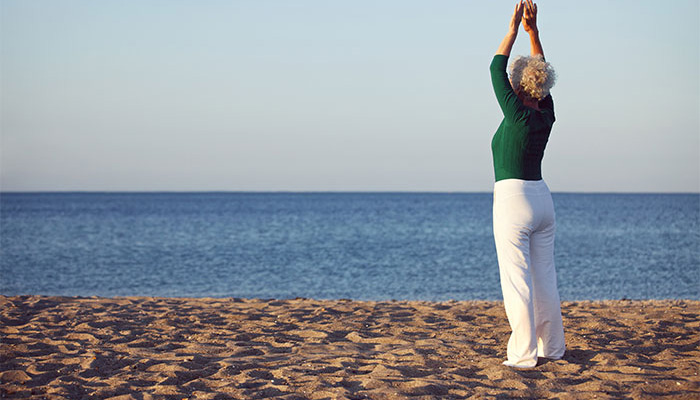
Benefits:
This is one of the simplest of asanas, which does a good job of correcting your posture. Breathing is the spirit of yoga. So, make sure to breathe as you go through with this pose. Here is what you can expect from Tadasana:
• Stronger and toned thighs, ankles, arms, and abs
• Better digestion
• Better circulation
• Lower tension and stress levels
• Better mobility
• Higher levels of energy
• Steadier breathing
Repeat Tadasana five times without taking any breaks.
2. Uttanasana – Standing Forward Bending Pose
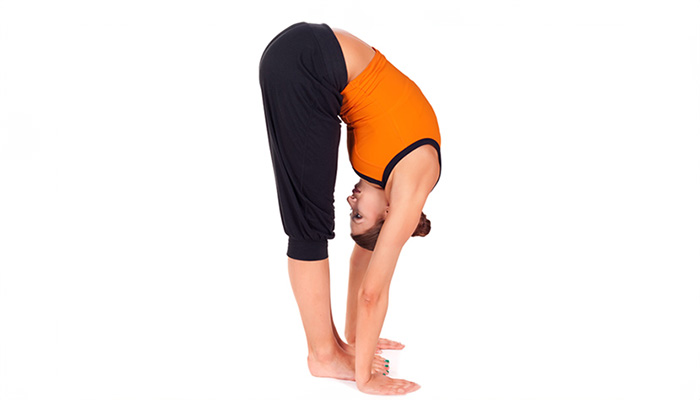
Benefits:
A mild inversion pose, this is commonly used to combat osteoporosis as well as menopause . A gentle hamstring and hip stretching exercise, it eases your stress levels too. Some of the benefits Uttanasana renders include:
• Better circulation of blood
• Improved digestive fire
• Gentle back massages easing your back pain
• Strengthens and tones hips and hamstrings
• Eases stress
• Younger looking skin
• Better sleep
Note: Avoid this exercise if you have back pain as it may worsen the issue.
3. Adho Mukha Svanasana – Downward Facing Dog Pose

Benefits:
With its innumerable benefits, it can be done by you with utmost ease. However, if you find it difficult to come all the way on your fours with hips pointing to the ceiling, take the help of a table top. Along with combating your menopausal distress, it is also effective in preventing the onset of osteoporosis. Here are some of the positive effects of practicing this simple yoga asana:
• Better circulation of blood
• Eases menopausal discomfort
• Eases tension
• Strengthens shoulder joints
• Hamstrings and arms get a good stretch
• Strengthens bones and prevents osteoporosis
• Elongates and strengthens spine
• Eases back pain
• Peps up your memory and cognitive power
4. Virabhadrasana I – Warrior I Pose
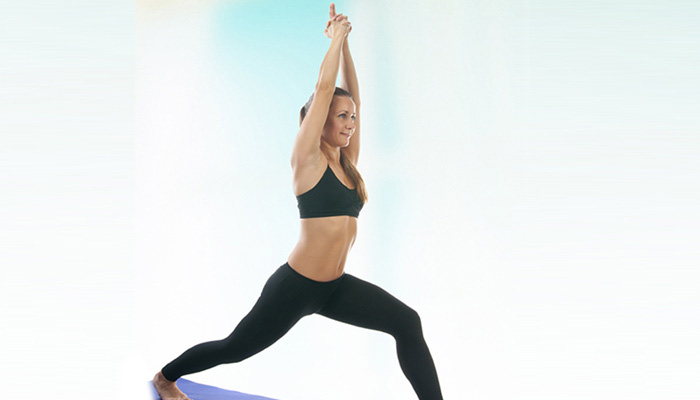
Benefits:
Strengthen your legs and hips with a standing yoga pose. Just make sure that your hips are squared to the front and not to the side. This ensures that your hips are stronger. A wholesome and holistic energising pose, it improves your breathing potential too. Check out what advantages you can reap by practicing Warrior I pose.
• Stronger back, ankles, legs, arms, and shoulders
• Your lungs, chest, and hips open up
• Better stability, balance, and focus
• Better circulation
• Better respiration
• Reduces any stiffness in the neck
• A 360 degree rejuvenating and energising experience
5. Paschimottanasana – Seated Forward Bend Pose
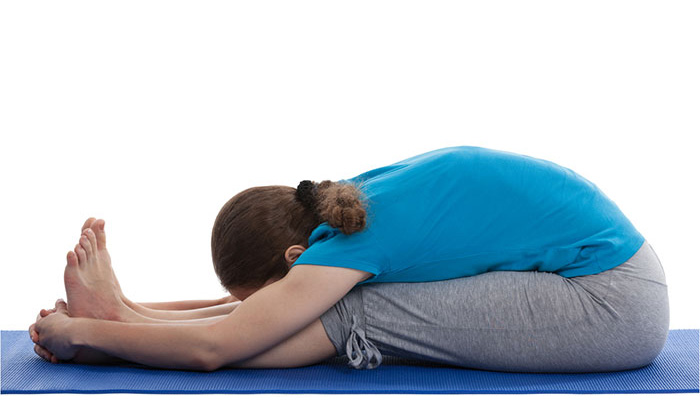
Benefits:
Along with helping you combat depression and stress, this pose could actually help you sleep better. It also wards off fatigue and prepares you to deal with menopausal issues in a better way. This is what you can expect from Seated Forward Bend Pose:
• Stretches your lower back, hamstrings, and spine
• Calms down your mind
• Eases anxiety and stress
• Bestows better digestive fire
• Helps in easing menopausal symptoms
• Lowers fatigue
• Stimulates better blood circulation to the spinal nerves and muscles.
• Stimulates the better functioning of the ovaries, uterus, kidneys, and liver
6. Balasana – Child’s Pose
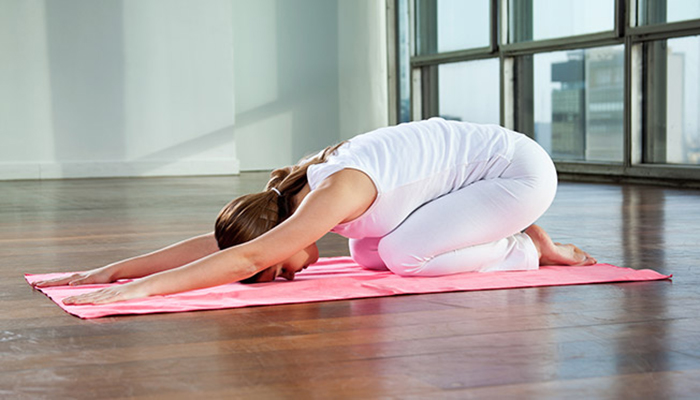
Benefits:
Relax like a child with your forehead resting on the mat while your hands relax alongside your body. It is an essential pose advocated to induce a sense of calmness and relaxation. It is also helpful in improving your digestive system and better handling of menopausal issues. Check out what Balasana has to offer you.
• Helps in releasing the tension experienced in the shoulder, chest, and back
• Alleviates anxiety and stress
• Flexes your vital organs, maintaining and improving their suppleness
• Eases fatigue
• Relieves lower back and neck pains
• Improves circulation levels
• Better digestive power
• Elongates and strengthens the spine
• Calms you down
7. Baddha Konasana – Bound Angle Pose
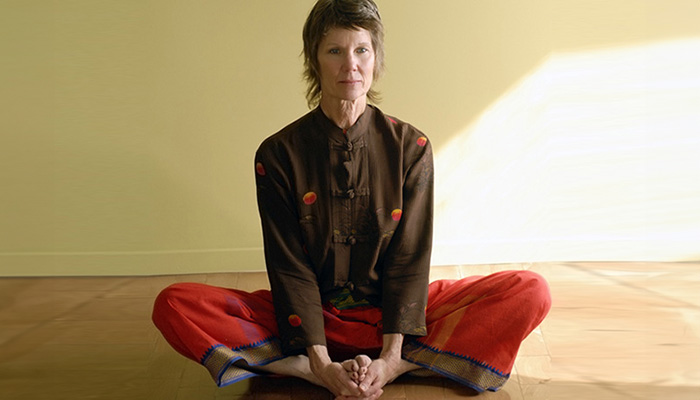
Benefits:
Take care of your hands, joints, legs, and back with utmost care with Baddha Konasana. This pose targets the areas of your body that are more susceptible to pains and aches. Along with strengthening your lower back, it also soothes menopausal complaints. Here are some of the benefits of Baddha Konasana:
• Improves and strengthens inner thighs, knees, and groins
• Opens up hips and groins
• Soothes menopausal complaints
• Improves digestion
• Eases stress and fatigue
• Opens the lower back, thus eases sciatica and lower back ache
8. Ardha Pavanamuktasana – One Legged Wind Releasing Pose
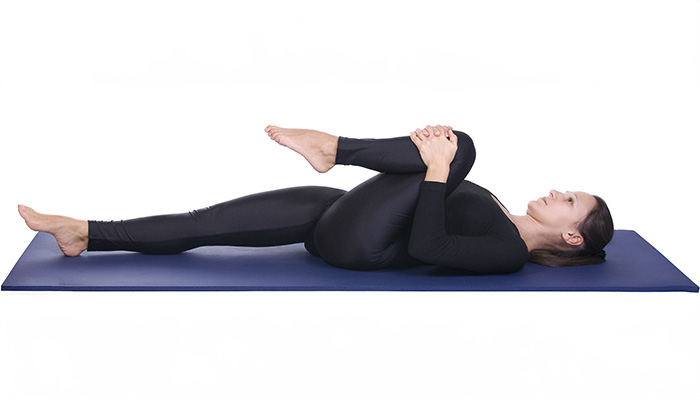
Benefits:
It is a powerful, yet gentle stretch offered to the mid and lower back as well as hips. The entire muscles of that region get a good massage and stretch, soothing out the nagging back ache. So, why exactly should you practice Ardha Pavanamuktasana? Read on to know.
• Stretches your neck and back
• Improves blood circulation
• Enhances the digestive power
• Relieves gasses trapped in the abdomen
• Eases constipation
• Strengthens lower back
• Massages your pelvic muscles
• Eases menopausal discomforts
• May tone thighs, butts, and lower abs
9. Bhujangasana – Cobra Pose
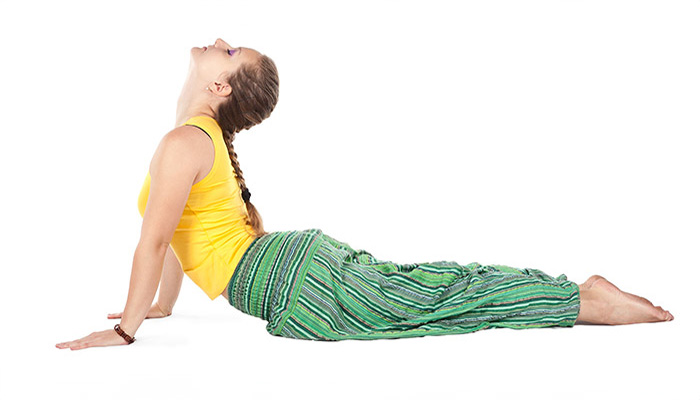
Benefits:
Give your back and abdominal muscles a good stretch and strengthen them with this Cobra Pose. Make sure you keep your shoulders relaxed and rolled backwards to avoid injuries. You can keep a block beneath the hands if you need additional support. This is how Bhujangasana benefits you:
• Eases lower back stiffness
• Improves your flexibility
• Soothes menopausal issues
• Improves your mood
• Reduces abdominal fat
• Tones your arms, abs, and butts
• Eases fatigue and stress
• Strengthens spine
• Eases sciatica
10. Shavasana – Corpse Pose
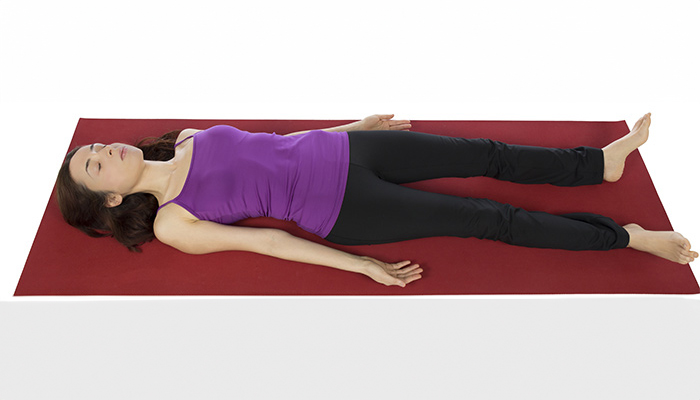
Benefits:
Wind up your yoga class with this simple, yet powerful yoga pose. It is not just a relaxation pose, but it allows you to create an awareness about your body and breathing pattern. This is how Shavasana helps you:
• Minimises tension
• Trains the mind
• Relaxes the mind
• Creates an awareness about yourself
• Awakens creativity
• Enhances memory and learning capacity
• Counteracts stress
11. Vrksasana
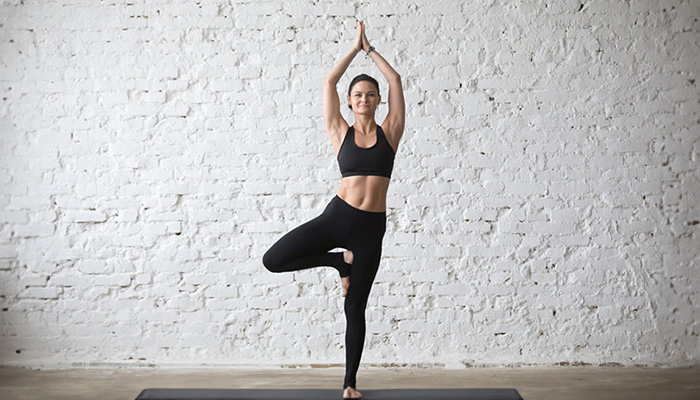
Benefits:
Vrksasana, or the Tree Pose, is a standing yoga posture that enhances balance and flexibility. It primarily stretches the thighs, groins, and the chest, promoting greater flexibility in these areas. It is a wonderful pose for grounding yourself and improving your overall sense of balance and poise. Here are some pf the benefits of this yoga asana:
• Improves Balance
• Strengthens Leg Muscles
• Tones Abdominal Muscles
• Enhances Concentration
• Reduces Stress
• Improves Posture
• Enhances Hip Flexibility
• Improves Digestion
BITE-SIZED EXERCISE THE KEY TO IMPROVED HEALTH FOR SENIORS
For those of us who want to be fit, but are turned off by the prospect of long and exhausting sessions at the gym, lifting weights, and pounding aerobics, this news could be life changing.
Researchers say short bursts of regular bodyweight at-home-strength-training is enough for people over 65 to maintain movement and enhance their quality of life. It’s called ‘exercise snacking’ – a routine of five different exercises such as:
• single-leg knee bends
• sit to stand, or
• single-leg quarter squats, all performed continuously for one minute, with a one-minute passive recovery break in-between.
The key to successful fitness is to perform the exercise routines at least once per day.
It’s well known that as we age, we lose skeletal muscle mass, strength, power, and functional capacity. In turn, that can affect independence and the risk of disease and mortality.
Dr Jackson Fyfe of Deakin University wants to break down the traditional barriers to fitness that older Australians face and instil long-lasting healthy habits that keep them mobile into the twilight years. “The benefits of exercise are well known, but despite this just 6 per cent of adults aged 50 and over meet the current guidelines for muscle resistance training,” Dr Fyfe said.
EXERCISING WHEN YOU’RE OVER 50
Staying active in your 50s and beyond can be the best gift you give to yourself.
Exercise can enhance your energy levels, keep you at a healthy weight, and even possibly reduce some of the symptoms associated with aging. Exercise can be good for your brain and emotional state as well as your body. Whether you’re looking to maintain your current weight or to feel more energetic and healthy overall, there are numerous ways to stay active when you’re over 50.
We recommend that you speak with your health practitioner prior to starting any new exercise routine or making changes to your current one.
Prevent illnesses and diseases
Regular exercise has been linked to a reduced risk or delayed development of many illnesses and diseases, as well as providing benefits for those with chronic conditions, including:
Heart disease and stroke
Joint and muscle pain
Type 2 diabetes
Alzheimer’s
Lung cancer
Colon cancer
Studies found that those who are fit are more likely to live longer and delay the onset of illnesses, with the most aerobically fit people typically developing chronic conditions in only the last five years of their life rather than the last 10, 15, or 20 years.
Boost brain and emotional health
Exercise is well known for having a positive impact on stress levels by boosting mood and raising the level of endorphins in your body. It’s also good for your brain because it is associated with reducing the risk of memory loss, dementia, cognitive decline and depression.
Exercise enhances your strength and flexibility, which supports better coordination and balance. By being physically fit, you could stay mobile and independent for longer.
Make it well-rounded
Change it up if you are getting bored of your regular routine. Some people are under the impression that they should stick to ‘seniors-only’ exercises, but if you are capable of safely doing more strenuous forms of exercise, you should do what you feel comfortable with.
Experts suggest that a well-rounded fitness routine incorporates three elements: aerobic activity, strength training, and stretching.
Aerobic activity – Aim for at least three or four 20-minute sessions of aerobic exercise each week, whether it’s jogging, walking, swimming, dance, or some other type of activity that gets your heart pumping.
Strength training – Strength training helps you retain or build muscle density and reduce the risk of back injury. Start with hand weights and do eight easy repetitions and build up to 12 reps. This will help you both build strength and strengthen your posture.
Stretching – Incorporate stretching and warm ups into your routine to build joint flexibility and reduce the risk of injury or strain. Try yoga, tai chi, or pilates movements as safe stretching exercises for standalone or pre-workout warm-up.
In general, there are no activities that are strictly off bounds to those over 50 as everyone is different and what you should avoid depends on your fitness level and whether you have any specific conditions. However, there are some exercises you might want to think twice about integrating into your program. For example, leg extension machine workouts can put a lot of strain on the knees, pull-downs or pull-ups behind the head stress the shoulders, and plyometric or jump-training movements can strain various other parts of the body.
Sourced from www.seniors.com.au
